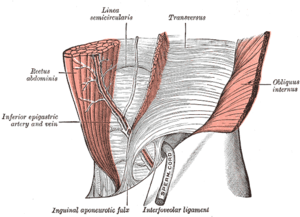
One of the muscles that is believed to be involved in maintaining spinal stability is the transverse abdominis. Associated with this muscle, and with back pain, are the multifidii. Dysfunction in either of these muscles are associated with lower back pain. Therefore, finding an exercise that trains these muscles to contract appropriately may help with back pain.
Here is the exercise that resulted in the best activation of the transverse abdominis with a slight twist of using a TRX suspension trainer. This is how you should perform the exercise
- Lay down onto the floor and side your feet through the feet straps/ring.
- Lift your buttocks up off the floor until your thighs are inline with your torso
- Open your legs up (abduct) and make sure your keep the hips up
- Hold for 10 seconds. Repeat
- Make sure you watch your breathing. Make sure you are breathing from the belly
Note: There should be no pain with this activity. In the research paper all subjects were able to perform the exercise pain free even though they had back pain.
This is what I learned from this paper:
- Suspended versions tend towards better activity of the transverse abdominis, especially with movement of the lower extremity.
- With regards to the abdominal drawing in maneuver it may not be necessary to teach provided similar benefits can be seen with the suspended method.
- I would be curious to see how the conventional bridge variations would compare both with and without the abdominal drawing in maneuver.
- I would also be curious to see if performing the abdominal maneuver during the suspended versions would result in superior results
- I would like to find out if performing these suspended versions would result in improvement in the subjects’ condition.
- What would the results be if we added in different leg movements?
That is all for this week. Until next time feel free and send me a message if you have any questions
Originally posted on May 17, 2022 @ 4:40 pm